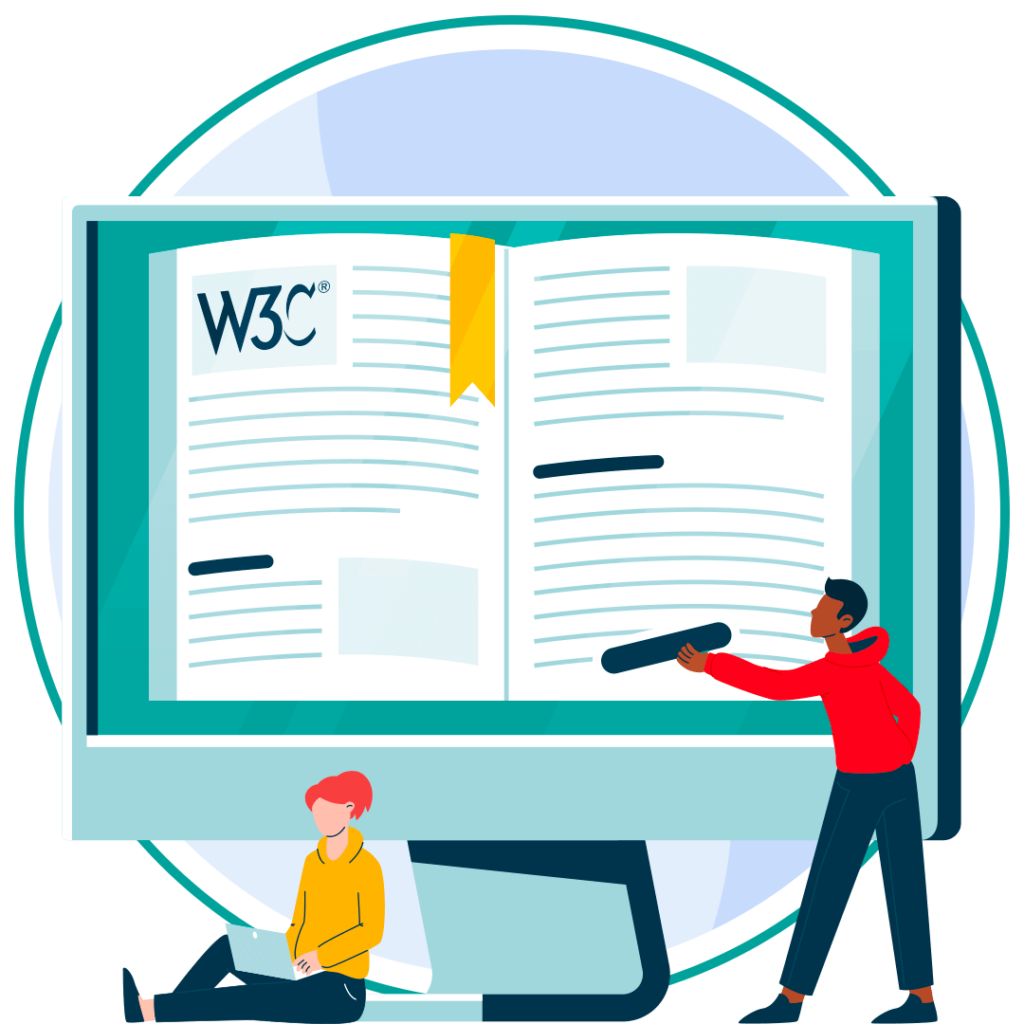Get A Free WCAG Compliance Check Of Your Website
Download NowAt Recite Me, we’ve been letting our clients know for quite some time now that a new standard of web accessibility is on the way. The initial public working draft of WCAG 3.0 was released on January 21, 2021, and the WC3 published the latest updated working draft on May 28th, 2024.
But don’t worry – there’s no need to panic just yet!
WCAG 3.0 is not expected to become an official W3C Standard for a few more years. However, the updates and developments of its structure over the extended planning phase tell us a lot about both the scope and conformance requirements that we can expect in the future. So, familiarising yourself with what to expect ahead of time is a smart business move.
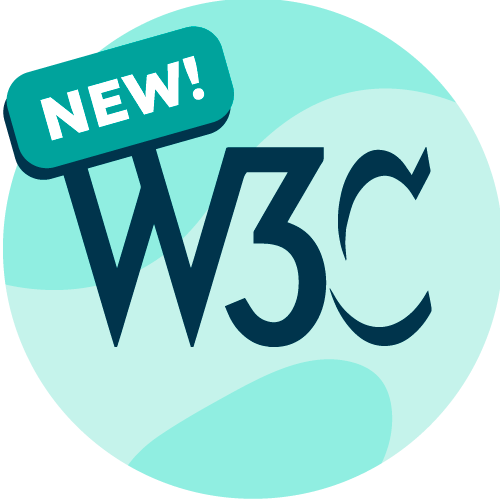
What is WCAG 3.0?
The Web Content Accessibility Guidelines (WCAG) represent a significant evolution in efforts to make online content accessible to everyone, including individuals with disabilities. Since the very first set of guidelines (WCAG 1.0) was published in May 1999, we’ve witnessed significant progress in how internet users worldwide can enjoy more accessible and inclusive online journeys.
WCAG 1.0 was followed by iterations 2.0, 2.1, and 2.2, each with an increased focus on various facets of web accessibility as technological advancement and the proliferation of online platforms continued to transform the digital landscape.
WCAG 3.0 is the next generation of web accessibility guidelines, designed to improve access to digital content even further. By providing more comprehensive, flexible, and user-oriented guidelines, the WC3 hopes to make web accessibility factors straightforward for organizations to understand, upgrades simpler to implement, and compliance easier to maintain.
How Does WCAG 3.0 Differ from Previous Versions?
WCAG 3.0 introduces several significant changes from its predecessors. By providing guidelines that are structured to be more adaptable, WCAG 3.0 allows for more frequent updates, ensuring sustained effectiveness as new technologies and accessibility challenges emerge.
Here’s a detailed breakdown of what to expect.
1. The Transition from Success Criteria and Techniques to Outcomes and Methods
WCAG 3.0 emphasizes the practical application of accessibility principles, providing clearer guidance on achieving inclusion goals.
The technical success criteria listed in previous WCAG versions facilitate true-or-false statements about the accessibility of the content on any given web page. Conversely, the outcomes listed in WCAG 3.0 are not true-or-false statements. Instead, they are rated on a 5-point scale ranging from 0 (very poor) to 4 (excellent) alongside methods offering detailed instructions on how to better meet each outcome.
The scores from each outcome can be combined with scores from other outcomes to determine the overall level of accessibility. In layman’s terms, this means it is possible for a website to meet a required level of conformance while still having some issues to work through – something that was not possible with WCAG 2.X versions.
2. Critical Errors
While the transition to outcomes and methods is notable, a certain number of pass/fail criteria will still apply – essentially servicing as a baseline for compliance.
Each outcome will be accompanied by a defined critical error. Provided each critical error criterion is met, a website can have a small number of outstanding accessibility errors still to fix. However, if even one critical error is unmet, the website would not be considered to conform to WCAG 3.0 at any level.
Examples of critical errors under WCAG 3.0 include, but are not limited to:
- Images without alternative text.
- Forms that lack proper labels and instructions.
- Content without keyboard accessibility.
- Inadequate color contrast ratios between the text and background.
- Videos and audio content without captions, transcripts, or audio descriptions.
- Interactive elements (like links and buttons) without clear focus indicators.
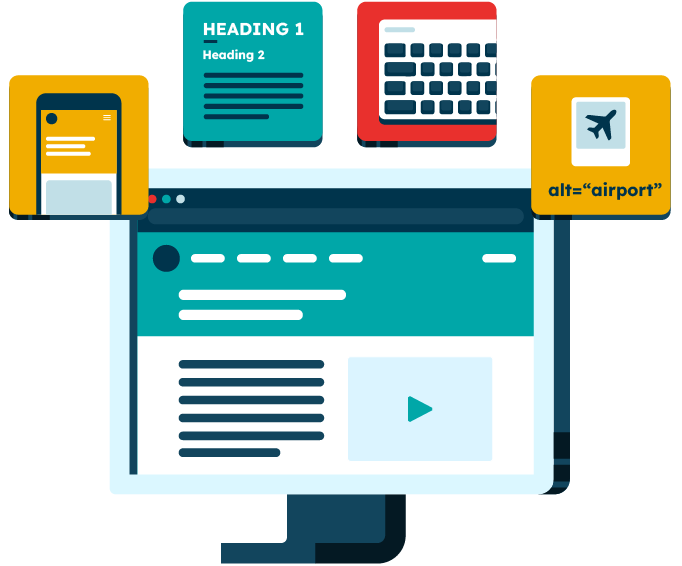
3. The Introduction of Functional Categories
WCAG 3.0 employs a more holistic approach to accessibility by introducing functional categories that group guidelines based on the types of disabilities.
By following a comprehensive framework that addresses a broader range of disabilities, it will become easier for developers to identify and implement the necessary criteria for different user needs. The types of disabilities covered include:
- Visual
- Auditory
- Physical
- Speech
- Cognitive
- Language
- Learning
- Neurological
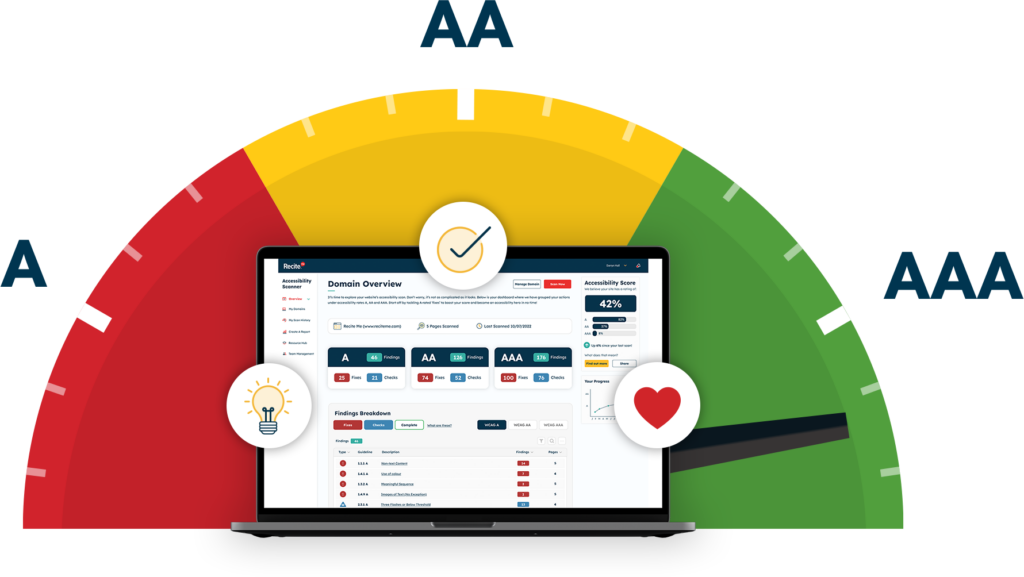
4. A New Scoring System
The traditional conformance levels of A, AA, and AAA will be replaced with Bronze, Silver, and Gold.
In current versions, the level of WCAG conformance is based on the following system:
- Level A/ Basic – 30 rudimentary accessibility criteria required to make a website technically accessible.
- Level AA/ Industry Standard – An additional 30 criteria that should be covered to meet an industry-accepted standard of accessibility.
- Level AAA/ Advanced – A total of 78 criteria, which, while desirable, may not be practical or necessary for all websites, but represents the highest level of accessibility.
While we’re still awaiting further details of precisely what the new bronze, silver, and gold structure will look like and how many additional criteria there will be, existing documentation suggests that the W3C is planning to introduce different types of testing for each level.
5. New Testing Approaches
New testing approaches are intended to provide more flexibility and practicality in evaluating accessibility.
The combination of pass/fail criteria (critical errors) and graded scores (outcomes and methods) allow for a more nuanced assessment of a website’s accessibility. At the most basic level of compliance, critical errors serve as an indicator of whether the most essential criteria are being met. Beyond this, testing is likely to encompass additional methodologies that encourage continuous improvement:
- Bronze – Atomic, element by element tests.
- Silver and Gold – Additional types of testing, such as usability testing, testing with assistive technologies, and cognitive walkthroughs.
Finding WCAG compliance issues is now easier than ever. Recite Me offers a free automated scan of your website’s homepage to highlight non-compliance. You’ll get recommendations on how to fix them, helping to improve your accessibility score.

The Benefits of WCAG 3.0 from an Organizational Perspective
Compliance with the most up-to-date WCAG standards equates to reduced legal risk in the face of increasingly stringent web accessibility legislation. However, there are several more advantages to adopting WCAG 3.0 once the final version is finalized.
Plain Language
Previous WCAG iterations have often proved complex to read and understand – especially for non-technical staff. WCAG 3.0 significantly reduces the amount of technical jargon and provides clearer, more actionable instructions that make it easier to create accessible web content.
A Broader Scope
The introduction of functional categories ensures comprehensive coverage of a broader range of disabilities and user needs. This includes enhanced guidelines for cognitive and learning disabilities as well as better support for mobile and emerging technologies.
Enhanced Flexibility
WCAG 3.0 represents a move away from rigid criteria, providing greater organizational flexibility to achieve accessibility using a variety of approaches.
Tips for Becoming WCAG 3.0 Compliant
Here’s a list of actionable WCAG best practices that can help you remain agile and up to speed with your web accessibility adjustments in the leadup to the final WCAG 3.0 publication:
- Stay updated with ongoing drafts and public feedback sessions to ensure compliance with the latest guidelines.
- Familiarize yourself with the new WCAG 3.0 structure. Take time to understand the specific outcomes and methods and how they relate to functional categories.
- Invest in training so development and content teams fully understand the current and emerging accessibility requirements.
- Embrace the flexibility offered by WCAG 3.0 by exploring multiple solutions to achieve your accessibility goals and milestones.
- Leverage accessibility tools like the Recite Me Accessibility Checker that support WCAG compliance.
- Maintain detailed documentation of your accessibility efforts, including testing results, changes made, and ongoing plans.
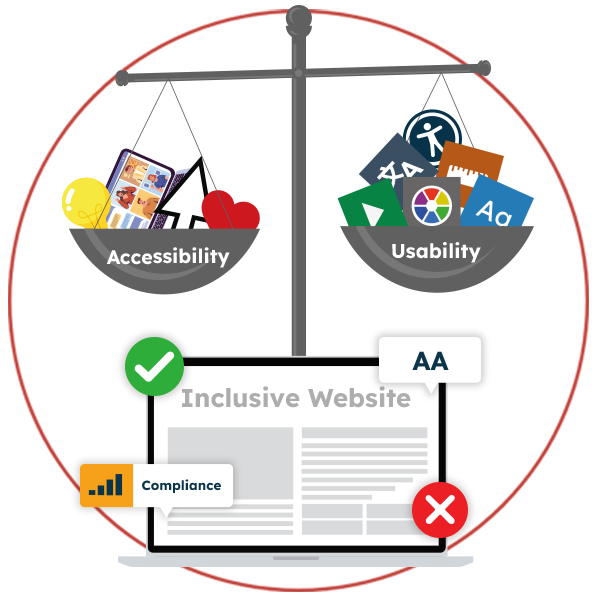
Learn More
Need help navigating your way around current WCAG compliance in your region or have questions about WCAG 3.0 standards and how they might impact your organization? Contact us today to learn more and discover how Recite Me’s suite of on-demand accessibility tools can help.
